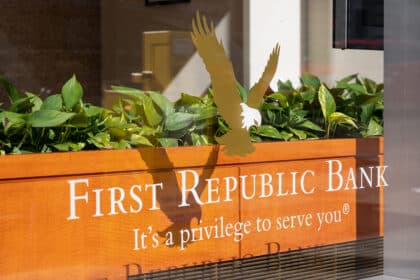[ad_1]
Since the collapse of Silicon Valley Bank, several industry stakeholders have been doing all they can to help cushion the pangs in the firm to help prevent it from collapsing.
Regional banks in the United States might have recorded their worst month ever this March, the surviving ones, including First Republic Bank (NYSE: FRC). At the time of writing, the shares of First Republic have jumped by 15.72% to $14.28 in a move that appears as though it wants to start paring off the losses it has accrued from that time to date.
First Republic Bank has been under intense pressure since the collapse of Silicon Valley Bank (SVB) earlier this month. SVB has a similar business model as First Republic, further intensifying the fears in the heart of both investors and daily customers. The strain observed in SVB was extended to Signature Bank with Federal Regulators closing both banks as withdrawals mounted.
The rebound in the shares of First Republic can be said to be fueled by the report that regulators are planning to extend support for the bank pending when it secures its own buyer in the short to mid-term. It was also reported that the strain being felt by these regional banks is wearing off, sending the shares of most FRC rivals up in consonance.
The shares of Los Angeles-based regional bank PacWest Bancorp (NASDAQ: PACW) recorded a 4.08% upsurge and is changing hands at $9.94 at the time of writing. Phoenix, Arizona-based Western Alliance Bancorporation (NYSE: WAL) was also not left behind as its price ticked upward by 4.70% to $34.70.
Should these regional banks continue on this impressive streak, we may see the majority close March on a more positive growth note than envisaged.
First Republic Business and Shares Bailout: an Effort by All
Since the collapse of Silicon Valley Bank, several industry stakeholders have been doing all they can to help cushion the pangs in the firm to help prevent it from collapsing.
As reported by Coinspeaker, the regional bank recouped a lot of the losses it accrued when a group of major financial institutions in the US rallied around and deposited a total of $30 billion to help show they have confidence in the bank.
The banks who supported the struggling bank include Wells Fargo (NYSE: WFC), Citigroup Inc (NYSE: C), Bank of America (NYSE: BAC), and JPMorgan Chase & Co (NYSE: JPM) – each pledging $5 billion. The duo of Goldman Sachs Group Inc (NYSE: GS) and Morgan Stanley (NYSE: MS) agreed to deposit $2.5 billion.
Additionally, a total of five other banks also pledged to contribute $1 billion each to help First Republic. These categories include Bank of New York Mellon (NYSE: BK), State Street Corporation (NYSE: STT), US Bancorp (NYSE: USB), PNC (NYSE: PNC), and Truist (NYSE: TFC).
The ultimate bailout also involved reimbursing every depositor in case there is a liquidity shortage as both federal regulators and private stakeholders are putting hands on deck to bail out their rivals. This also shows the strength and coordination in the American banking industry.

Benjamin Godfrey is a blockchain enthusiast and journalists who relish writing about the real life applications of blockchain technology and innovations to drive general acceptance and worldwide integration of the emerging technology. His desires to educate people about cryptocurrencies inspires his contributions to renowned blockchain based media and sites. Benjamin Godfrey is a lover of sports and agriculture.
[ad_2]
Source link


